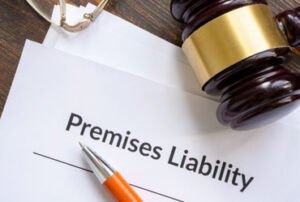 A premises liability claim means that a property owner is legally responsible for the harm that occurs on their property on someone or some entity. All the states require that owners who occupy premises should ensure that the place is reasonably safe for visitors to the property. Failure to preserve the property safe enough, consequently, provides the legal notion of “premises liability”.
A premises liability claim means that a property owner is legally responsible for the harm that occurs on their property on someone or some entity. All the states require that owners who occupy premises should ensure that the place is reasonably safe for visitors to the property. Failure to preserve the property safe enough, consequently, provides the legal notion of “premises liability”.
And What About Injuries at Apartment Complexes or Commercial Property That Is Only Rented?
Generally, a landlord is not liable for the harm of a guest of a tenant since it is thought that tenant has control over the state of the premises. But there are some situations, for example, the action may be brought to recover damages for latent defects – hidden and hazardous states at the moment when the tenant moves into the premises. The other exception arises where the landlord was making repairs for the tenant. The repairs have to be done without negligence. There is a variation in the law across the fifty states of the United States as to who can sue for premises liability and when. Some states consider the status of the person entering the property to require liability or not.
Normally, this status is called invitee, licensee, or trespasser depending on the status of the visitor in those states. A licensee is a person who enters a property with the consent of the owner as a business person such as a customer in a mall. A social guest/ licensee is also found at the premises by invitation or with the permission of the owner/ tenant of the property. As for invitees and licensees the invitation also creates the implied warranty that it is safe to come onto the property. Several states distinguish between different types of visitors and the level of care owed to them, and invitees and licensees, in different states, the maximum level of care is required towards both.
In many states that rely on the character of the visitor to determine negligence those who are on the property and have no right to be there but are injured cannot have a case. The owner or occupant is only required to avoid deliberately seeking to cause harm on the trespasser for example through the use of traps. However, in some situations when an owner has information that the particular place is likely to be entered by a trespasser, the owner is expected to provide the necessary warnings of non-ordinary risks to such trespassers.
Typically, the only time this is not the case is when the defendant gets involved with a so-called ‘child trespasser,’ where the child trespasser may have something ‘attractive’ in their eyes, such as a swimming pool, and therefore is owed a higher duty of care than would immediately meet the eye.
In other states, courts consider the condition of the premises and conduct of the owner and the visitor. In most cases, has the property owner and occupants legally responsible for keeping the property reasonably safe and to make repairs for all individuals going to the property except for trespassers. There are circumstances that relate to the coming of the visitor to the property, nature of the property itself, the extent to which the owner or occupant was able to repair or warn and whether the injury was reasonably foreseeable. An owner or occupant must actively seek such conditions to identify them, fix them or notify them so that the lawful persons do not get harmed.